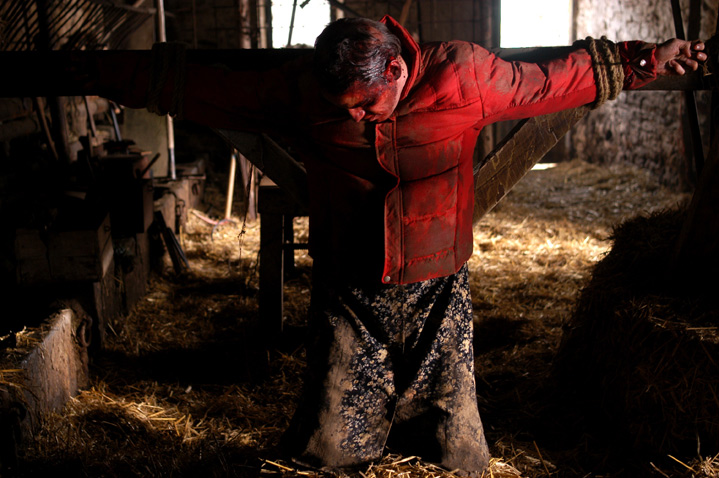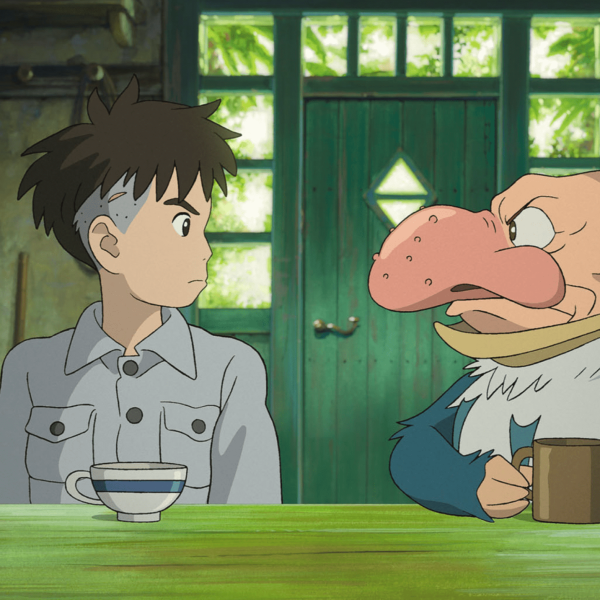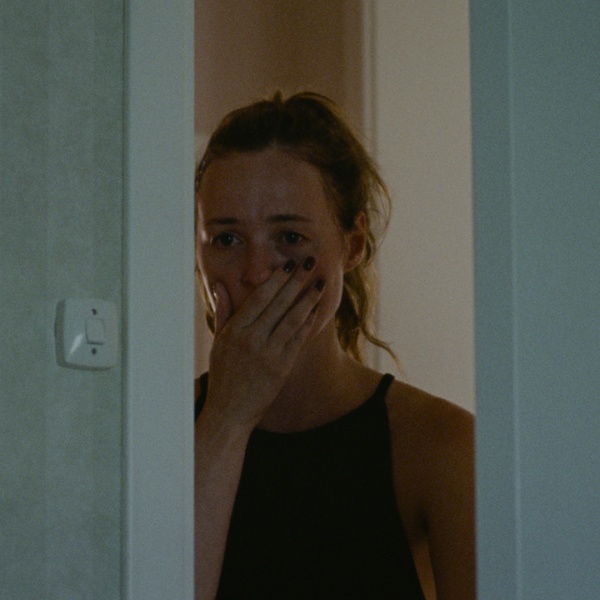
There’s a reason so many American horror films in the last couple of decades have largely been remakes of foreign language movies – because those films are really, really scary. The fact that the remakes are, by and large, completely awful, has to do with the specificity – there are details in culture and location that, when displaced, shuffled, or wholly removed, greatly impact the narrative and the power of the storytelling. Feudal Japan, with its cultural landscape of spirits intermingling with the living, can’t be swapped for suburban Chicago, the home of Abe Froman, the Sausage King. In the age of the internet, it’s been easier for keen-eyed genre enthusiasts to diagnose which foreign horror films are worth tracking down (and which, in the decades previous, you might have missed).
In honor of Halloween, we’ve put together a list of foreign horror films that we truly love, most of which are too outré, too thematically unnerving or graphically violent, to be made in genial America. Each film is worth seeking out for a good scare, specially if you don’t mind your goose-bumps with subtitles.
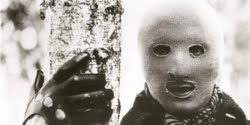 “Torso” (1973)
“Torso” (1973)
Like most Italian horror films from this period (particularly the work of Dario Argento, who didn’t make the list but is haunting it in spirit for sure), it’s pretty hard to figure out what, exactly, is going on most of the time in “Torso.” While there are some brutal murders (carried out by a killer in black leather gloves of course), a surprisingly involving lesbian subplot, gorgeously staged shots of men running down shadowy alleyways (love those abrupt zooms), lots and lots of boobs, and plenty of texture (particularly fun: the guy who has to explain to the police that he stumbled across a dead body while taking a dump), the actual plot remains obscure. The real reason to watch “Torso,” though, is for the finally 20 minutes or so, set in a kind of sexed-up girl’s dormitory (nude sunbathing is encouraged), some of which was borrowed for another list entry “High Tension.” In fact, this sequence is such a virtuoso suspense set piece that it makes you easily forgive the lapses in logic and occasional confusion that preceded it.
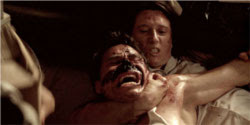 “We Are What We Are” (2010)
“We Are What We Are” (2010)
A man lumbers towards a passersby in a mall, reaching for help, food, a hand, anything. As he becomes transfixed by the mannequins in fancy clothes, he slowly starts to deteriorate even further, from a drunken mess into a shamble of a man, before keeling over and slowly gurgling into the afterlife. Without missing a beat, a cleaning crew shows up, removing the corpse, giving the floor a quick scrub and continuing to maintain the area for the local customers. So begins our introduction to the world of our characters, a lower class family who is reduced to cannibalism to survive in a harsh capitalist society. Though “We Are What We Are” captures a fascinating underworld, distinctly Mexican in identity, it nonetheless represents nearly universal financial insecurity amongst lower classes, now forced to eat themselves to death, separated from their demise by the taste of flesh and the embrace of each other. “We Are What We Are” also manages to tell a conventionally-compelling story of the dynamics between two brothers, one impulsive and murderous and the other taciturn, as well as their subservient sister and judgmental mother. Before its ninety minutes are up, you’ll start to feel ill within your own skin.
 “Eyes Without A Face” (1960)
“Eyes Without A Face” (1960)
“Ahead of its time” is an expression often used in critical circles, but in the case of the 1960 French shocker “Eyes Without a Face,” it’s more like a euphemism for “Holy shit, that was violent and downright unsettling.” The climactic, bloody machine gun massacre from “Bonnie and Clyde” is typically cited as a key moment when movies crossed a new line of onscreen graphic ultra-violence, but ‘Face’ had it beat by seven years. The film still packs a powerful, creepy punch even today (and still influences the genre; see “The Skin I Live In”), most notably in its centerpiece scene involving a literal face-lifting heterograft surgery, shown in detailed close-up with very few cuts (no pun intended). The surgeon in the scene, Dr. Génessier, is hoping to graft this new mug on to his faceless daughter Christiane, who was badly injured in a car accident. A genuine feeling of unease is hard to avoid when watching this film, from director Georges Franju. Maybe it’s the cold, clinical fashion in which the doctor, along with his assistant Louise, go about their crimes, like they believe what they’re doing is justified, or that we sometimes sympathize with the film’s villains. Either way, this is one beautiful piece of horror cinema – which Criterion thankfully unearthed in its proper version on DVD – with one of the most satisfying and twisted endings since “Freaks.”
“Calvaire” (2004)
Belgian writer/director Fabrice Du Welz is a true student of cinema. He cites “The Texas Chainsaw Massacre” and “Deliverance” as inspirations for his first feature film, about a somewhat pathetic singer who wrecks his van en route to a Christmas performance, only to be taken in and “helped” by a gentleman who’d give Norman Bates the heebie jeebies. “Calvaire,” which translates to the hilariously broad “The Ordeal,” most resembles Hitchcock’s “Psycho,” but in place of a villain with mommy issues, here the baddie is heartbroken and insane over his estranged wife Gloria, and living in a town of pig fuckers. As upsetting as the film gets at times, especially when the shit hits the fan in the final third, it actually works mostly as an oil-black comedy. The innocent main character is so undeserving of the punishment bestowed upon him through the film’s tough 88 minutes that it truly becomes comical after a while. Du Welz plays genre hopscotch (in many ways, this film carries the DNA for the adventurous narrative of Kevin Smith’s “Red State”) with such wanton confidence that it seems like the whole film will spiral out of control, and to some extent it does, but it’s all in service to the mean-spirited tragic comedy. It would be a crime not to mention cinematographer Benoît Debie’s stylish use of the camera, shooting in long, mostly handheld takes, and unafraid to push the boundaries of where the camera can physically go (something he started with Gaspar Noe’s “Irreversible” and pushed to orgasmic limits with last year’s “Enter the Void”). We suggest you watch this scene, as even in context it hardly makes any more sense. If you laugh and find it genuinely weird and disconcerting, then you may love this film too, like we do.
 “Who Can Kill a Child?” (1976)
“Who Can Kill a Child?” (1976)
Even in the horror genre, where we expect, and frequently desire to see fucked-up, never-seen-that-before levels of violence and mayhem, there are lines most filmmakers won’t cross. It’s rare to see children killed on screen, and if they are, it’s a warning to the audience that pretty much anything can happen, and nobody is safe. With the disturbing “Who Can Kill a Child?,” director Narciso Ibáñez Serrador made an entire film about this very concept. An amiable English couple is on holiday (we’re cheating a little here; there is a hefty chunk of English-language dialogue in the film, after all, but it’s pretty Spanish in tone). They head to a small Spanish island that appears deserted, until they encounter the children. It becomes clear pretty soon that these kids have taken over and killed nearly all of the adults around (save for the occasional old man as a living piñata), and our heroes, Tom and Evelyn, are forced to confront their darkest capabilities. How far will they be pushed before they cross that line? Well, it’s all there in the title. This is a splendid piece of work, expertly crafted and paced slowly, but all-too effectively. Serrador is wise not to give much in the way of explanation (the opening credits, while a bit didactic, do serve a purpose), opting instead to put the audience in the place of the unfortunate couple. Things go from bad to worse quickly, and Serrador is unafraid to travel down some dank and dingy (but quite clever) back alleys in the narrative. For instance, if all the kids have suddenly turned psycho killer, what happens with the baby growing inside Evelyn? A 2007 DVD release finally made this lost 1976 Spanish horror masterpiece available, and heavily influenced “Calvaire” director Fabrice Du Welz’s very good second film, “Vinyan,” itself ripe for discovery.
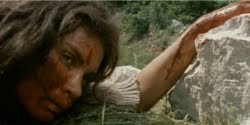 “Don’t Torture a Duckling” (1972)
“Don’t Torture a Duckling” (1972)
Though Lucio Fulci has had a long career filled with unforgettable genre highlights (guy had a zombie fight a shark in “Zombie” — RESPECT), most consider his work, particularly the later productions, to be slipshod, overly-silly genre pictures with little to no merit, humorously low-fi effects, and histrionic performances from a repertory house of non-professionals. But if one catches “Don’t Torture A Duckling,” the first of Fulci’s truly gruesome epics, they’ll notice a filmmaker with a much sharper handle on his craft, and a confidence to extend the drama and psycho-sexual in lieu of the quick-cut gore moments that would define Fulci’s later work. ‘Duckling’ centers on a small Italian town struck by child murders, and the investigation that ensues, leading angry villagers to the doorstep of a sexy local witch. Like the great giallos, ‘Duckling’ has appropriately sleazy plot twists and an emphasis on perverse, sickening gore. But Fulci’s artful approach creates genuine outrage during a hectic, incendiary climax that lingers along with the typically-excellent Riz Ortolani score.
 “High Tension” (2003)
“High Tension” (2003)
Forget about the copout, Donald Kaufman-aping throw-your-remote-at-the-television-in-frustration stupidity of the last ten minutes (a twist suggested by Luc Besson, of course) and “High Tension” is the best slasher movie since John Carpenter’s immortal 1978 classic “Halloween.” A relentless, pulse-pounding, blood-splattered new classic, the film is set largely n a remote farmhouse, and follows a young woman (Cecile de France) spending the weekend with her college bestie. When a mysterious, jump-suited man shows up at the house, she’s the lone survivor, and what follows is a ridiculously tense game of cat-and-mouse that plays like the best unofficial Dean Koontz adaptation ever. There’s some seriously squishy, terrifying stuff, in part influenced by that last section of “Torso.” It was so graphic, in fact that it had to be trimmed in America to avoid a dreaded NC-17 rating. The movie marked the arrival of Alexandre Aja and Gregory Levasseur on the international horror movie scene. The team would go on to give us the wonderfully twisted remakes of “The Hills Have Eyes” and “Piranha,” but it was “High Tension” that signaled true artists in a genre littered with hacks and hucksters. (It also features the best use of a Muse song in a movie. Ever.)
“Nosferatu The Vampyre” (1979)
Considering that, well, he’s Werner Herzog, it’s surprising that he’s has only made one film that fits neatly in the horror genre pocket. Typically, Herzog didn’t shy away from grand ambitions, remaking, in 1979, F.W. Murnau’s “Nosferatu the Vampyre,” one of the earliest, and still best, examples of the genre, itself a copyright-baiting adaptation of Bram Stoker’s seminal “Dracula” (thanks to the rights expiring, the director is able to bring elements of the novel back in, although it still differs greatly, most notably in its shocking coda). It’s one of the most-adapted tales of all time, but Herzog finds fresh blood, as it were. It’s partly thanks to Herzog’s regular collaborator/tormentor Klaus Kinski, in their second film together. Not for Kinski is the suave aristocrat of Bela Lugosi or Christopher Lee’s portrayals; here, the Count is a true monster, an inhuman creep that’ll haunt you for some time to come. It’s not, it should be said, the scariest vampire movie you’ll ever see, with the director finding a very different pace, one that instills dread rather than fear, and shying away completely from simple jump scares. You may think you’ve seen every possible version of the tale, but until you’ve seen Herzog get his hands on it, you ain’t seen nothing yet.
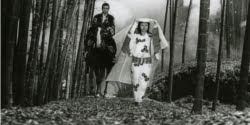 “Kuroneko” (1968)
“Kuroneko” (1968)
1968 was an important year for horror. In America, “Rosemary’s Baby” rattled the country with its portrayal of upper class Satan worship, and in Japan, director Kaneto Shindo (who helmed the similarly unsettling “Onibaba” four years earlier) unleashed “Kuroneko” aka “Black Cat.” The movie, which recently got the deluxe Criterion treatment, is the tale of a band of marauding samurai who rape and kill two women in the countryside (and set their home on fire). Awoken by the titular feline, the spirit women vow their revenge on samurai. Things get complicated when one of their intended victims turns out to be the son of one of the women and the husband of the other, long thought lost in battle. “Kuroneko” is eerie and emotionally riveting, particularly towards the end, in which a twinge of psychosexual suspense enters the picture. It’s also gorgeously photographed in black-and-white, with the ghostly cat-women gliding through the bamboo forests, thirsty for bloody vengeance.
 “Amer” (2009)
“Amer” (2009)
Like surgeons, Helene Cattet and Bruno Forzani co-directed “Amer” not so much as an homage, but an operating table autopsy, bringing it back to life with the use of new ideas and concepts, but also the reinvention of older ones. The vignette-like story involves the adventures of a young woman coming of age at various points of her life, her sexual awakening tied to the threat of a gloved stalker, a local gang, and any of the aggressively chaotic sensory avalanches constantly threatening to capture her whole. “Amer” is sexy like a knife, utilizing gorgeous cinematography and intense close-ups to present the mindset of a giallo character, awash in decadent colors, heightened gore and absurd melodrama. It’s both parodic and straight-faced, lovingly detailed down to the beads of sweat on our hero/victim’s skin like a fresh soft drink. Most importantly, “Amer” is not dryly academic, but instead hallucinatory and unforgettable, filled with images that, divorced from context, are sure to be nightly fixtures in your darkest dreams. A must for the beard-stroking horror fan.
Honorable Mentions: We could go on forever with examples, but if the above gets you hooked on subtitled scares, there are plenty of other places to go. Dario Argento is one of the masters (at least until the last couple of decades), and “Suspiria” is probably the best place to start for newcomers. Bonkers Japanese flick “Hausu” is extraordinary stuff, and was only excised from the list because we designed last year’s Halloween feature entirely around it — read that here.
Anyone turned on by the gory French horror revival embodies by “High Tension” above should also seek out either 2007’s “Inside” or 2008’s “Martyrs,” both of which is genuinely boundary-pushing, each with at least one scene that can turn even hardened horror fans a bit queasy. Similarly disturbing, although lighter on the red stuff, Michael Haneke‘s “Funny Games.” And yeah, stick with the 1997 Austrian original there, rather than the remake.
Slant this week called “Kairo” the best horror movie of the last decade-and-a-half, and, while we wouldn’t go that far, it’s strong stuff, a cut above the ghost-haunting-some-kind-of-technology films that dominated turn-of-the-millennium Japanese cinema. On a vaguely similar theme, although very different: body-horror “Tetsuo: The Iron Man,” which only just missed the list because, as one staffer put it, “it transcends genre.” For a laugh, give it to your nephew and tell them that it’s that Robert Downey Jr superhero movie.
Finally, two stone-cold classics that aren’t quite horror, but certainly move in those waters; Henri-Georges Clouzot‘s “Les Diaboliques” and George Sluizer‘s “The Vanishing.” Both are perhaps closer to Hitchcockian thriller than anything else, but they’ve got plenty of scares, including particularly memorable, chilling ends in each case. What else is out there? Anything we should include next time around?
– Drew Taylor, Erik McLanahan, Gabe Toro, Oliver Lyttelton
